I picked this book up when I was in San Francisco and just finished it. It is surprisingly a page turner. The history of a color? I have to say I was hooked by the cover. That incredible turban from “Portrait of a Man” by Jan van Eyck. It’s gorgeous redness just leaps off the page. The book tells the story of the treasured and legendary red dye known as cochineal, which comes from a small insect that lives on the nopal cactus, primarily in Oaxaca Mexico. Before you nod off thinking this is some “how to” tome about red dye, consider that red was the color of kings, nobility and the papacy. It symbolized and bestowed power and was prized for centuries above all others. Countries fought over it, pirates got involved, spies were hired and died and in search of it and several obsessive souls were literally driven mad by it. It’s all told here in an entertaining and lively voice.
Cochineal first appeared on my personal radar screen when I was in Oaxaca last November. I am not a painter, but I use paint and like most artists, I am passionate about color. When we visited both the wonderful weavers of Teotitlan del Valle and the carvers of San Martin Tilcajete, we learned of their passion for natural dyes and the colors they create from them. One of them is cochineal.
Yarns from the weaver we visited at Teotitlan del Valle. Sumptuous colors, all from natural dyes.
A collection of the weaver’s natural dyes. There is a little basket of cochineal on the left, the one that looks like purple grains.
The weaver grinding color.
The carver showing us some of his fantastic dye colors.
Gorgeous, gorgeous colors!
When I watch the film, The Girl With The Pearl Earring (if you haven’t seen it get thee to a video store. Today.), I always pause it and rewind to the scene where Vermeer is teaching young Grete to mix his colors. The alchemical table that holds his treasured colors is magic to me. Take a look here, if you are interested. O.K. it’s kind of a dorky homemade pairing of a great movie with a song out of context, but you get to see the color mixing table.
Just as becoming more conscious of where our food comes from is a good thing, so too our colors. We open the tubes and viscous, lovely color pours out. But where does it come from? Where in nature does is appear? How is it transformed into the paint and dyes and watercolors we all love so much? It’s food for thought. And if this post piques your interest at all, add A Perfect Red to your bedside book stack.

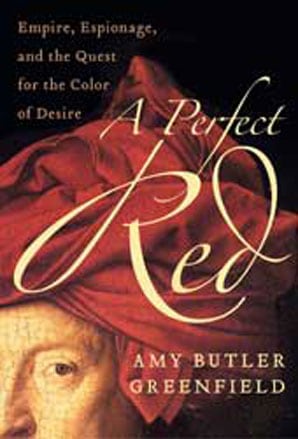
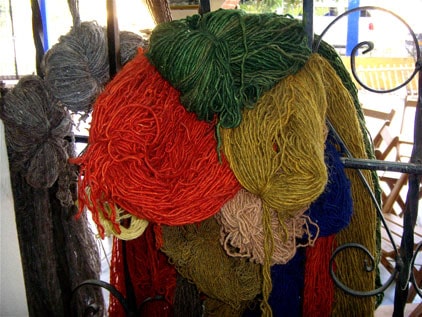
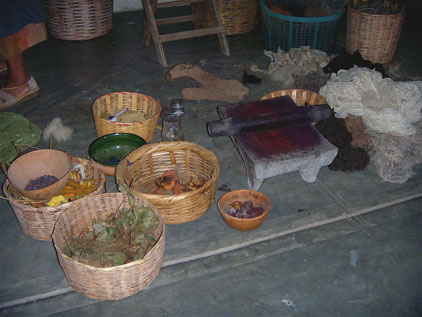
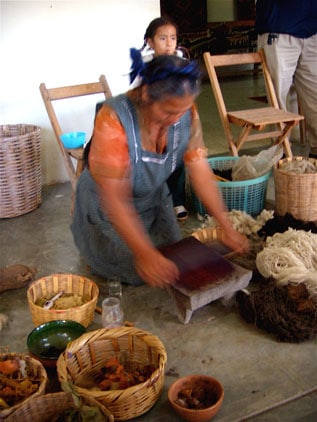
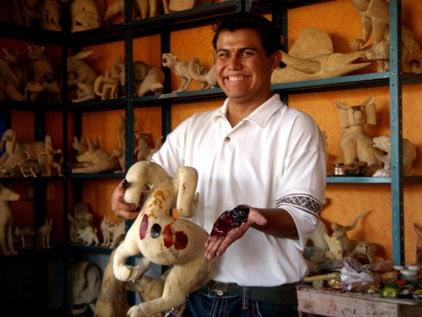
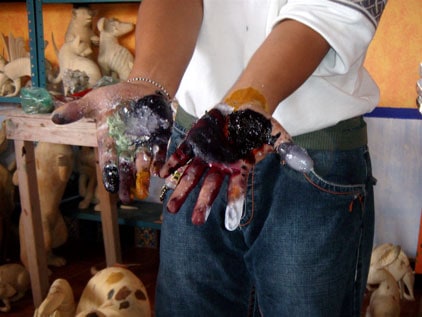
Fran, great post and YES, you have piqued my interest in this book.
This used to be my passion, natural dyes and fiber. I have used cochineal and indigo and black oak. Thank you for bringing this back to me!
x…x
steph
Excellent!
Adding A Perfect Red to my “to read” list.
These pictures are such a great addition to the post about your passion for color. I especially the the mans dye coated hands.
If there are in fact, more senses that the human race hasn’t tapped into, don’t you wonder what they are?
ooxx
Leese